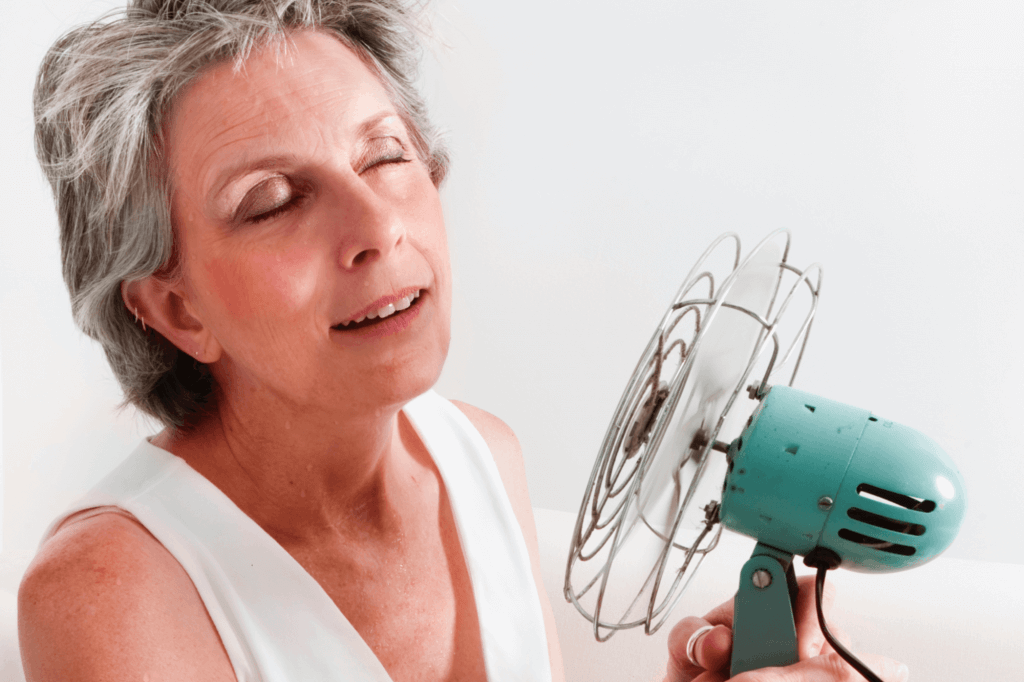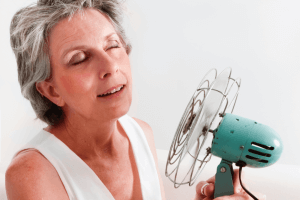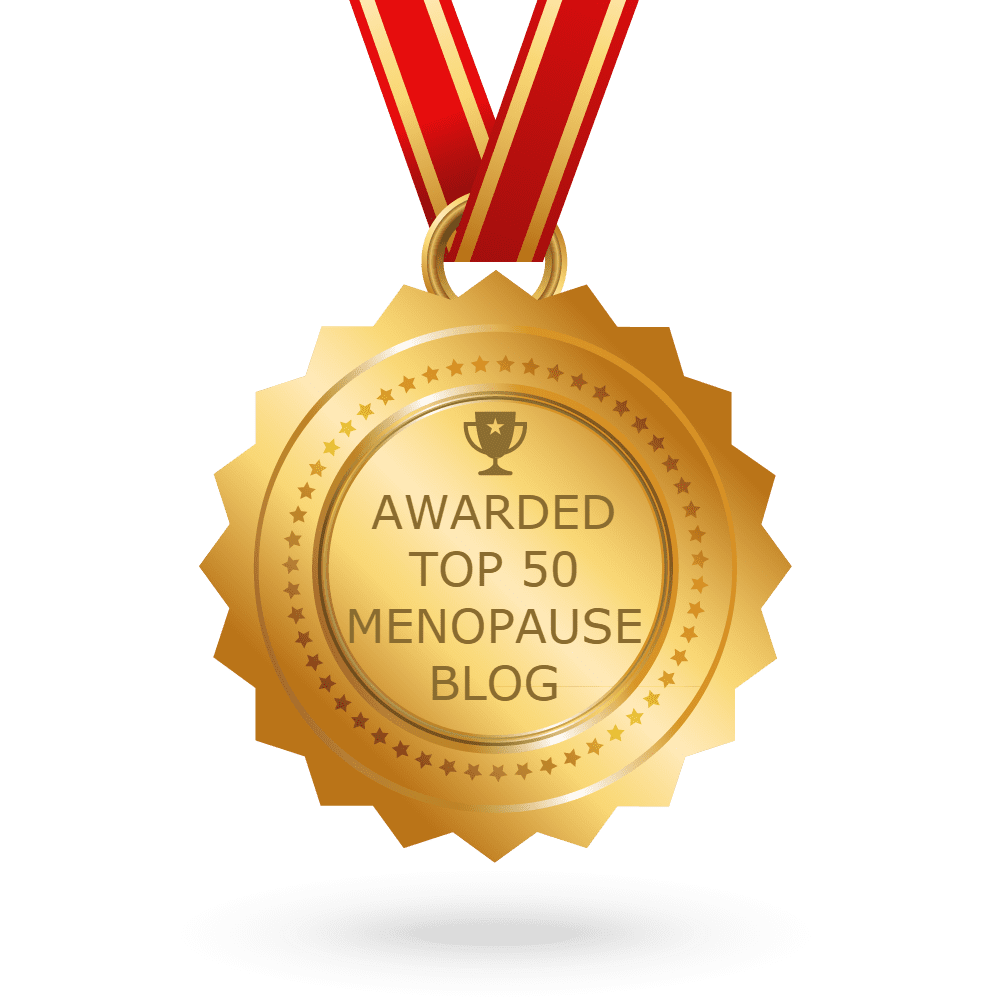Are you feeling the heat of menopause like Rachel?

Rachel definitely knows she is menopausal
Rachel works full time in retail management. She is 53 and started looking out for the signs of menopause when she turned 50. For her, the change of life was not subtle.
She has been having hot flushes for over two years now and the impact on her life is not trivial.
Hot flushes are not cool
Rachel used to be a self-professed “cold fish”. You know the one – the lover of electric blankets, fluffy duvets and always an extra layer (of merino!) when going outside. Not any more.
She knew what to expect with hot flushes but wasn’t prepared for her body to feel constantly over-heated. Just one look at Rachel and you know something is going on. Her face and neck are constantly red and her skin looks and feels dehydrated. And when the hot flushes come, she can literally feel the sweat dripping, and becomes conscious of body odour. This is so not cool when you are working in retail.
There are times when she just wants to hide from people. Her male boss doesn’t see her anxiety and she’s embarrassed to talk to him about it. She worries that she can’t perform her job and this stress seems to feed her hot flushes.
Oh and you should see Rachel’s bed now – a single sheet and she still gets drenched from night sweats – in the middle of winter!
Related Articles

Viv’s Aware of Post-Menopause Body
What does this mean for her? Postmenopausal for the rest of your life! Viv is 58 and had her last

Rachel gets Persistent Hot Flushes
Are you feeling the heat of menopause like Rachel? Rachel definitely knows she is menopausal Rachel works full time in

Early Menopause for Teresa
Teresa’s cancer battle was tough enough. Now menopause… Artificial menopause can result from chemotherapy Teresa is only 38. At the

Lisa is Perimenopausal
Lisa is in perimenopause but doesn’t know it. Could you be like Lisa? Lisa is 46 years old and leads






